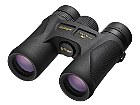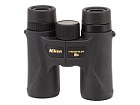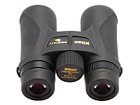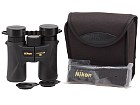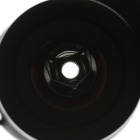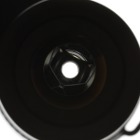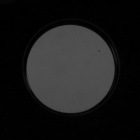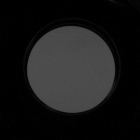Nikon Prostaff 7s 8x30
According to the producer the binoculars feature multiple coating layers covering all air-to-glass surfaces, a comfortable eye relief and they are fully waterproof (for maximum 10 minutes up to a depth of 1 meter). The buyers get objective caps, a rainguard, a strap and a case in the box. The binoculars also come with a 10-year guarantee period.
| Magnification | Lens diameter | Angular field of view | Prisms | Eye relief | Weight | Price |
|---|---|---|---|---|---|---|
| 8 | 30 | 114/1000(6.5o) | BaK-4/roof | 15.4 mm | 415 g | 599 PLN |
Summary
Pros:
- handy, comfortable and physically light casing,
- sensible transmission for a cheap roof prism device,
- good colour rendition,
- moderate astigmatism,
- slight coma,
- imperceptible brightness loss on the edge of the field,
- good sharpness almost across the whole field,
- high quality BaK-4 glass prisms.
Cons:
- narrow field of view,
- a lot of reflections near exit pupils.
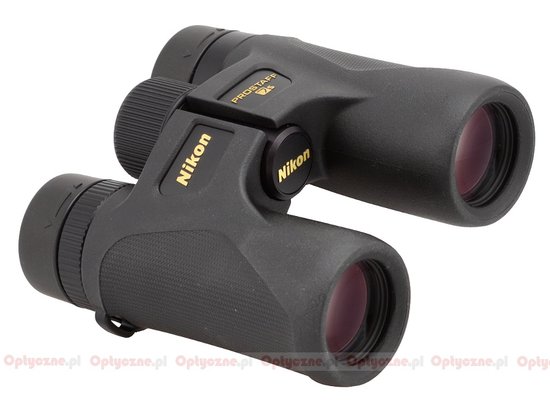 |
One glance at the final result of our test, the dimensions and weight of the tested Prostaff 7s 8x30 and its price and you know that you deal here with one of more interesting options at a price point to 250 Euro. For a quite moderate amount of money you get an optical instrument without any serious flaw. Due to its physical dimensions it might become your loyal and efficient companion on different trips. Still the photo below shows clearly that, despite a tad smaller objectives, the Prostaff remains bigger than the Delta One 8x32.
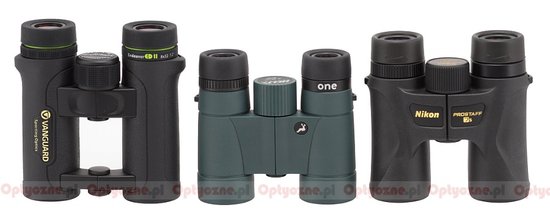 Vanguard Endeavor ED II 8x32, Delta Optical One 8x32 and Nikon Prostaff 7s 8x30. |
Of course there is no rose without a thorn. It seems many good results of the tested pair of binoculars are owed to the narrow field of view – after all 6.5 degrees in an instrument with the 8 x magnification is bordering the effect of a ‘keyhole’. However it is more than understandable that with such a low price and small dimensions some compromises were simply unavoidable; in this case the producer decided the field of view would be such a compromise.
They didn’t stint on coatings, though. A transmission level in a wide range of the spectrum not much worse than 90% is something you don’t see often when it comes to roof prism binoculars sold at this price point.
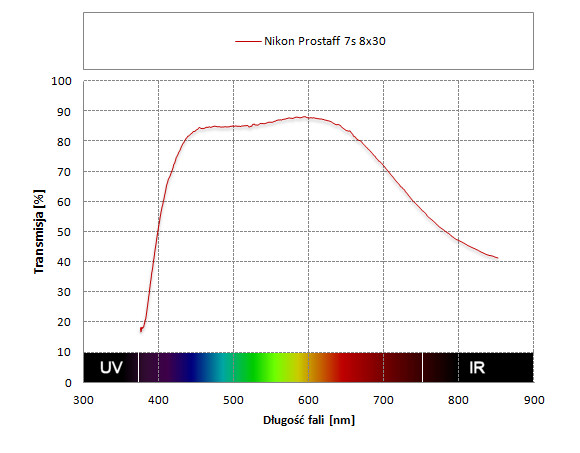 |
It seems that the Vixen New Foresta HR 8x32 WP might be the most serious rival of the Prostaff as it got a bit better result in our test. Still you should keep in mind the fact that the Vixen is slightly more expensive and far less handy than the Nikon. In the 8x30/8x32 segment physical dimensions and weight are often an important selling point and they can be a strong advantage of the Nikon; supported by its lower price tag, they might persuade many potential buyers.
Anyway we are very pleasantly surprised by the performance of the small Nikon – let’s hope there are more and more such good instruments available on the market.




